
views
Game Setup

Determine who will have the first turn. Before you set up the board, you need to choose who goes first. You can do this based on who won the last game, a coin toss, or by any other method. The person who will go first will take the black checkers and the other will take the white. Keep in mind that in checkers, the player with the black checkers always goes first.
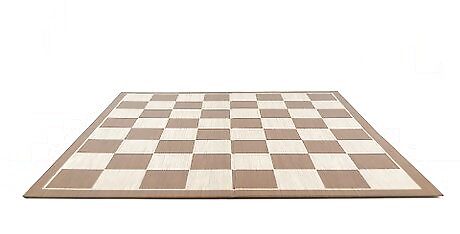
Set up the board. Sit across from your opponent and place the board between you and your opponent. The board is made up of 64 alternating dark and light squares which appear in 8 rows of 8. There are 32 light squares and 32 dark squares. Place the board so that each player has a light-colored square on the corner of the board on his or her right side.
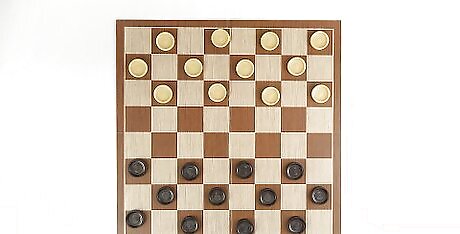
Place the checkers on the board. Have each player place his pieces on the 12 dark squares in the first three rows closest to him or her. Each of these three rows should have a total of 4 checkers. Remember that checkers may only move in diagonal directions on the dark squares. Since the board has 8 rows, 6 of the rows will be taken up by the players' checkers and two rows will be left open in the middle of the board.

Decide if you are going to time each other’s moves. In tournament checkers games, each player gets five minutes to make a move. If you want to time each other’s moves to keep the game moving along, make sure that you place a timer near the checkers board before you begin a game.
Checkers Rules and Gameplay
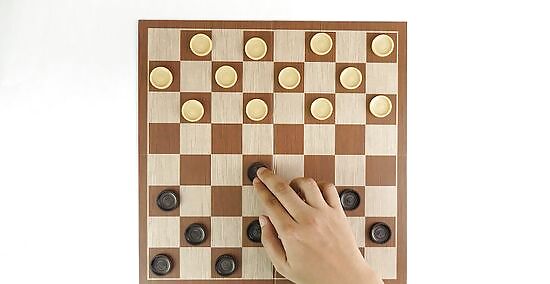
Start the game if you’re the player with black checkers. You can only move one checker one diagonal space forward (toward your opponent’s checkers) during a regular turn. Checkers must stay on the dark squares. Once the player with black checkers makes their first move, the player with white checkers moves, and then you’ll take turns.
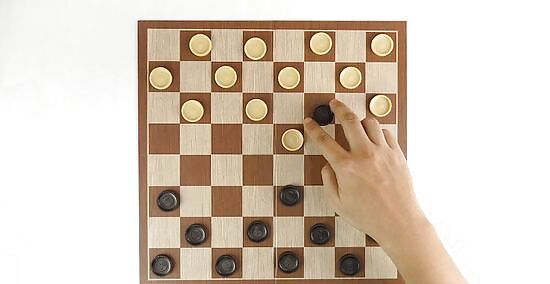
Jump your opponent's checkers to remove them from the board. If your checker is in the diagonal space nearest to one of your opponent's checkers, then you can jump and capture that checker. To capture a checker, move two diagonal spaces in the direction of the checker you’re attacking, like you are hopping over your opponent's piece. The space on the other side of your opponent’s checker has to be empty so that you can move into it. If you have the opportunity to jump your opponent's checker, then the rules state you must jump it. If you have the opportunity to jump your opponent's checker in multiple parts of the board, then you can choose which checkers you'd like to jump. If the new position you land in gives you a direct opportunity to capture another checker, then you must keep going until you can't capture any more of your opponent's checkers.

King your pieces when your checkers reach the end of your opponent's side. To crown a checker and make it a king checker, simply place one of your own captured pieces on top of it. The king can move forward and backward diagonally on the dark squares, so it's easier for king checkers to capture your opponent's checkers. Kings can still only move one diagonal space at a time during a non-capture move. However, when a king is capturing checkers, it can move forward and backward on the same turn. This would apply only if a king were doing a capture move that required it to change directions, such as if two checkers were lined up next to each other on dark squares in a horizontal line. To capture these checkers, the king would have to jump forwards and then backwards. Some checkers sets have a crown on the back of the checkers, so you can just flip a piece over once it is crowned to designate it as the king. There is no limit to how many crowned pieces you can have.
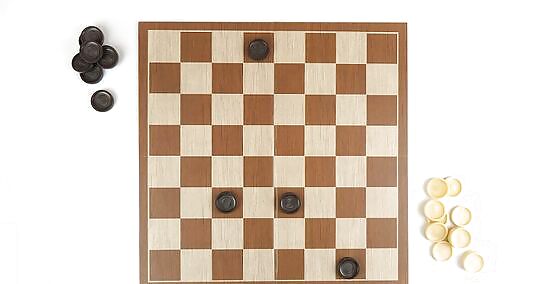
Keep jumping and capturing to win the game. Continue jumping and capturing your opponent's checkers until they are all removed from the board. Once you have captured all of your opponent’s checkers, you have won the game! A less common way to win is when all of your opponent's pieces are blocked so that your opponent can't make any more moves.
Strategies and Tactics

Play an offensive game, not a defensive game. A beginner may be tempted to keep their pieces at the edges of the board and to try to avoid the opponent's checkers as much as possible, but this is a mistake. Work on capturing your opponent’s checkers rather than going out of your way to defend your own. It’s okay if some of your pieces get captured as long as you capture more of your opponent’s pieces. Be bold and try to capture your opponent's checkers whenever you can.
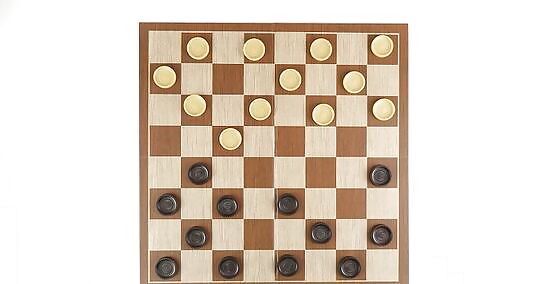
Move your pieces together. If you move a stray checker a few squares forward without moving the rest of your checkers, that piece will be vulnerable to capture. Instead, try keeping some of your checkers together, like a blockade. The center of the board is a good place to have a group of checkers protecting each other as they move forward. Just try not to move all of your checkers towards the center because it will be hard to move them. If your checkers move together, it will be harder for your opponent to capture your checkers. But if your opponent does still manage to capture your checker, then you'll have a piece waiting to capture his checker as well.
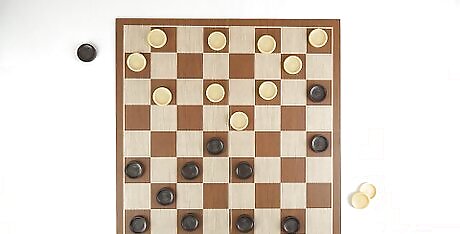
Keep a full back row for as long as you can. If your opponent gets a piece to your back row, then it will be crowned and more difficult to capture. Keeping a full back row is the best way to keep your opponent from crowning his pieces. It will also make it easier for you to capture any opposing pieces that approach your back row.

Know when to sacrifice your pieces. If you're ahead in the game, or even dead even with your opponent, don't be afraid to sacrifice a piece if it means you'll be able to capture your opponent's piece back or gain a significant positional advantage. Keep the forward momentum going. Do what you can to avoid having your king captured. The king is much more valuable than a regular checker. Don't trade pieces if it will make it easier for your opponent to king a piece. Trade one for two. Give up one of your pieces if it means you can capture two of your opponent's pieces in return.
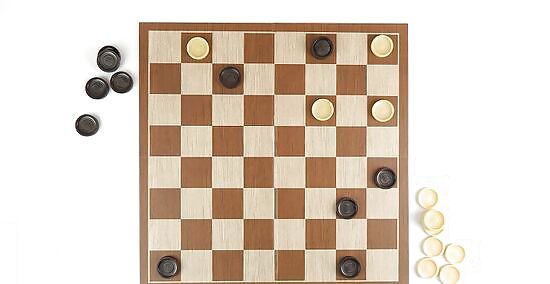
Focus on the kings. You should focus on crowning as many of your pieces as possible, as well as on keeping your opponent from crowning his pieces. This should be a priority as you advance in the game. However, don't crown your pieces if it means losing several checkers on the way. Be strategic about knowing when to crown your piece.

Block your opponent. Try to keep his active pieces blocked if you can, so he will be forced to play with pieces such as those in the back row. If all your opponent's pieces are blocked and cannot move, then he will lose. You can also work on capturing more of your opponent’s pieces or crowning your own.

Keep practicing. Though there's no foolproof way to win at checkers every single time. The more you play, the more you'll understand how to strategize. If you want to be a checkers expert, you should try to play as much as you can to improve your game. Try playing with someone above your skill level. This will challenge you and will force you to pick up your game. If you are babysitting, you can take this board game and play it with the kids. Even if the kids have a house full of toys, whatever you bring along will be new and exciting. Parents will also notice that you are more proactive and prepared than other babysitters who arrive empty-handed.
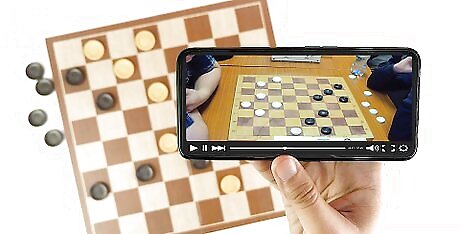
Watch an expert. Watch an expert checkers player, either in person or on television. You'll pick up a lot of pointers just by watching an expert maneuver their pieces around the board. Pay attention to what the expert does in certain situations. Try reading about checkers strategies online or in books as well. Some checkers experts have written about their strategies and reading about them may help you to improve your game.



















Comments
0 comment